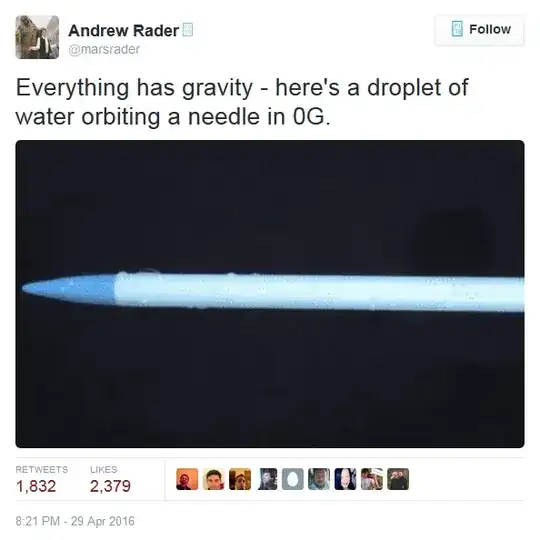Andrew Rader, an author and engineeer, tweeted a GIF video showing a droplet of water rotating around some sort of probe. 
Everything has gravity - here's a droplet of water orbiting a needle in 0G.
No source is provided. The scale is unclear. The result is counter-intuitive, and I am skeptical.
I realize that there is a stitching point somewhere to make the GIF repeat. I'm not challenging that aspect.
Does this video show a water droplet in (gravitational) orbit around a needle?